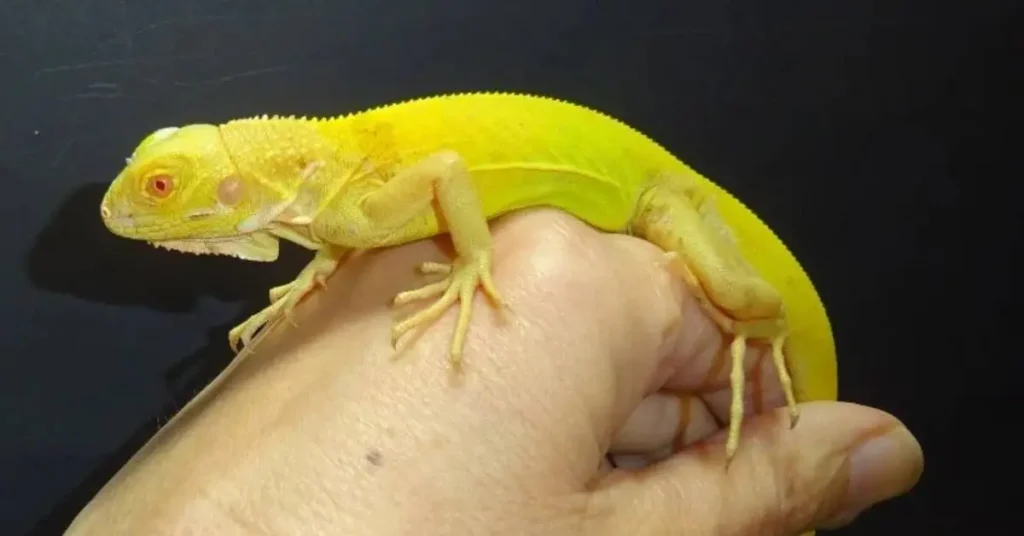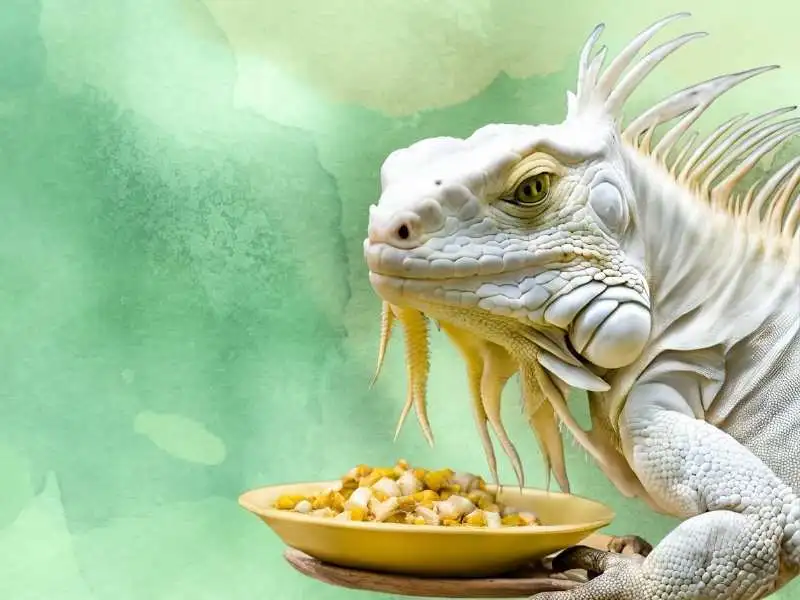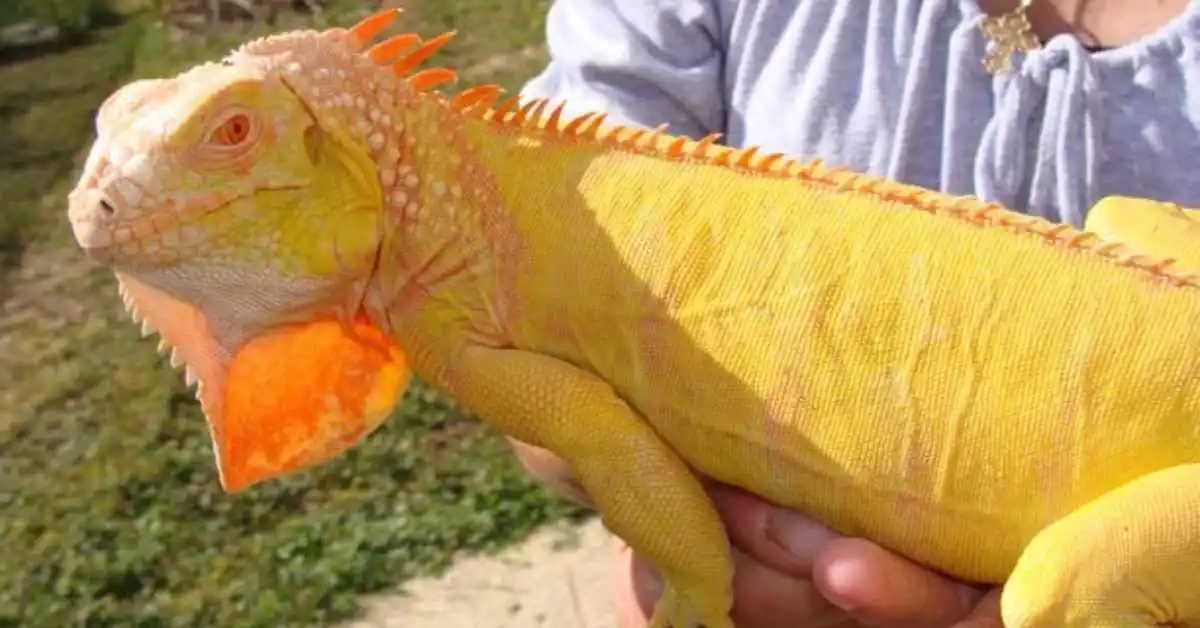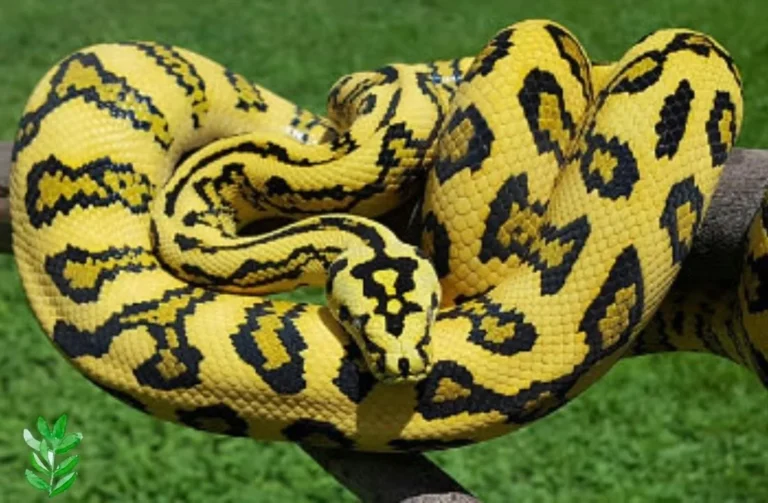Albino Iguana Care
Albino Iguanas are mostly found in Central and South America. Their vibrant color makes them unique. They are a rare type of green Iguana. They are the most popular pets in the world due to their behavior. Their white color of skin turns yellowish due to the lack of melanin. This loss of color makes them more sensitive to high light and UV. Usually, they did not have a scientific name.
Overview of Albino Iguana:
- Common name: Albino Iguana
- Food: Turnip leaves, fruits, vegetables
- Weight: 4 to 6 kg
- Size: 1 to 2 meters

Physical characteristics of Albino Iguana:
As they are fed properly, they increase in size and weight which is a normal weight of 4 to 6 kg and their size is 1 to 2 meters according to their proper growth size of the enclosure.
Due to a lack of melanin, their white colors turn into yellowish. They have the pink color of their size which looks very attractive and wonderful. They have a light color in their skin which makes them unique.
Albino iguanas have light colors because they are very sensitive to UV and highlight. Their skin is treated in a special way to protect it from sunburn and UV damage.
The Housing of Albino Iguana:
Enclosure size:
For a baby, a 20-gallon aquarium is adequate. An adult iguana which can grow to 6 feet in length and weigh 11 or more pounds, requires much more room. An adult iguana tank should be at least twelve feet long by eight feet high.
Humidity:
Humidity should be in the area of sixty-five to eighty percent for your pet iguana. Baby iguanas need a higher humidity on average versus adults. If there is low or high humidity in their enclosure they may suffer from various diseases and reduce their growth.
Temperature:
The normal temperature of an Albino Iguana enclosure should be eighty-five to ninety Fahrenheit, with the hottest point of enclosure reaching ninety to one hundred-five Fahrenheit. If there is a normal temperature according to their need they grow properly and remain healthy.
Lighting:
UVB light plays a vital role in helping them gain vitamin, which helps in absorbing calcium from food. If they don’t get enough UVB light, they may suffer from diseases that can sometimes be dangerous. UVB light makes their body strong and prevents their bones from weakness.
Substrate:
Good substrates for their enclosure floor include newspaper, butcher paper, or artificial grass made for them. These substrates help to maintain the humidity level of the enclosure and keep it healthy.
Behavior and Temperament of Albino Iguana:
They are active during the daytime, feeding on leaves, flowers, and fruit. They naturally include it, it is near water, likes to stay close and when it feels any kind of danger no matter how high it is, it jumps from the height that it is below. They escape by jumping into the water. On top of that albino iguanas typically go blind within the first couple of years.
Albino Iguana lifespan:
The lifespan of an Albino Iguana is on average twelve to fifteen years. When well cared for, a healthy iguana can easily supersede that and live more than twenty years.
- In the wild: Average lifespan twelve to fifteen years
- In captivity: With proper care seventeen to twenty years
Food and Diet of Albino Iguana:
Without food and diet, no one can live and survive. Food is the best source for them to survive and keeps them healthy. Their food mostly consists of the following:
- Turnip greens
- Grapes
- Radish
- Okra
- Pears

Breeding of Albino Iguana:
Breeding albino iguanas typically occurs in captivity, requiring a spacious habitat with proper lighting, temperature, and humidity. Healthy males and females are paired, with mating behaviors such as head bobbing and chasing observed. After mating, females lay twenty to fifty eggs about six to eight weeks later in a suitable nesting area.
The eggs should be incubated at eighty to eighty-five with high humidity. Hatching occurs in sixty to ninety days and hatchlings need a safe, warm environment with a diet of soft leafy greens. Successful breeding requires careful management and knowledge of Iguana care.
Health problems of Albino Iguana:
Skin Issues:
Due to their light colors, they are very sensitive to UV and Highlight which causes them to burn their skin and feel irritation from the highlight. To prevent this use controlled light devices which protect their skin.
Respiratory infections:
When there is low or high humidity and temperature they start wheezing and take breath from the mouth. To prevent this, improve the environmental conditions and give them proper care.
Obesity:
If their diet is not balanced properly, they can become overweight, leading to various health problems, including joint issues, and their life span is also decreased. To prevent this, give them proper food at limits according to their need.
Why are Albino Iguana special as pets?
Albino iguanas can be unusual pets, but they need special attention, such as a large habitat with the right temperature and UVB sunlight. They should eat a range of fruits, vegetables, and leafy greens. For them, regular handling is essential. They are a long-term commitment because, with the right care, they can live for seventeen to twenty years.
Caring Tips of Albino Iguana:
- Assure a roomy enclosure with comfortable hiding places and climbing routes.
- Use UVB illumination for ten to twelve hours every day and establish a temperature gradient.
- Avoid foods high in oxalate and provide a diversified diet of fruits, vegetables, and leafy greens while making sure the animal gets enough calcium and water.
- Medical treatment regularly to keep an eye on health, paying particular attention to the state of your skin and any possible metabolic disorders.
Conclusion:
They are mostly native to Central America. They are the most popular pets due to their docile nature and behavior. Their yellowish color on the body looks very attractive and unique. Their eyes have pink colors which are very beautiful. For their proper growth, they need proper care and a balanced diet.







